The D6 chord is a captivating and versatile chord that adds a unique color to your guitar playing. Expanding upon the standard D major chord, the D6 incorporates the 6th degree of the major scale, resulting in a richer, more sophisticated sound. This lesson will delve into the construction of the D6 chord, explore various positions to play it on the guitar, and discuss how you can effectively use it in your music.
What Makes the D6 Chord Special? Exploring the Theory
To truly appreciate the D6 chord, it’s essential to understand its theoretical foundation. The D6 chord is built upon the D major scale and comprises four distinct notes:
- D (Root – 1)
- F# (Major Third – 3)
- A (Perfect Fifth – 5)
- B (Major Sixth – 6)
These notes correspond to the 1st, 3rd, 5th, and 6th intervals of the D major scale. The addition of the 6th (B) is what distinguishes the D6 from a standard D major chord, lending it a sweeter, more melodic quality. If you’re interested in a deeper dive into chord construction using intervals, our comprehensive guide on building chords by stacking intervals is a valuable resource.
The D6 chord belongs to the family of sixth chords, which are known for their lush and jazzy character. They add a touch of sophistication and emotional depth to chord progressions. To broaden your understanding of these chords, you might find our dedicated tutorial on sixth guitar chords particularly insightful.
A solid grasp of fretboard intervals is beneficial when learning new chords and voicings. If you need to refresh your knowledge, our tutorial on fretboard intervals can provide the necessary foundation.
Mastering the D6 Chord: Positions and Diagrams
Let’s explore different ways to play the D6 chord across the guitar fretboard. Below are several common positions, ranging from open chord voicings to movable shapes. Chord diagrams are presented from easiest to more challenging to facilitate your learning process. If you are new to reading chord diagrams, our guide on how to read chord diagrams will be helpful.
For those encountering challenges with barre chords, our Bar Chords Tips tutorial offers valuable techniques and exercises.
For a text-based representation of these chord diagrams, you can also visit this accessible chords page which provides written instructions.
Position 1: Open Voicing
This open position D6 chord is a great starting point, offering a bright and resonant sound.
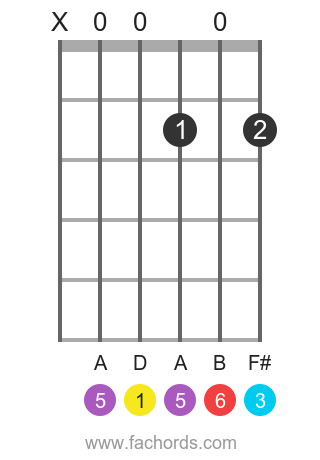 D6 chord position 1 open voicing diagram
D6 chord position 1 open voicing diagram
Position 2: Movable Shape
This movable D6 shape allows you to play the chord in different positions up the neck.
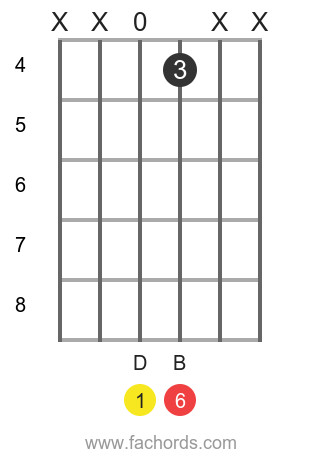 D6 chord position 2 movable shape diagram
D6 chord position 2 movable shape diagram
Position 3: Open Position Variation
Another open position D6 voicing, offering a slightly different tonal color.
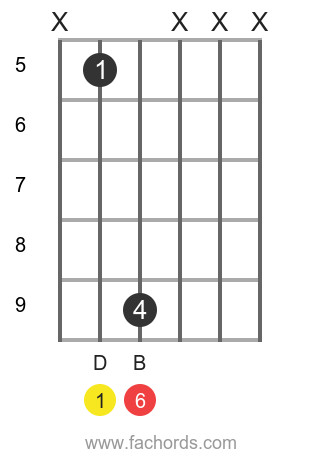 D6 chord position 3 open variation diagram
D6 chord position 3 open variation diagram
Position 4: Movable Shape on Lower Frets
This movable shape is positioned lower on the neck, providing a warmer tone.
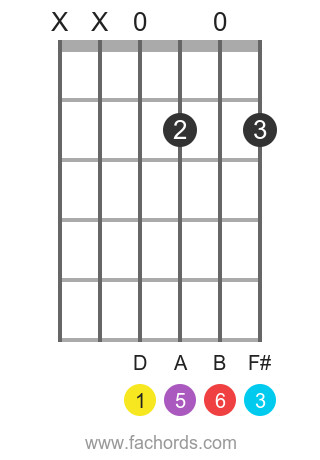 D6 chord position 4 movable low fret diagram
D6 chord position 4 movable low fret diagram
Position 5: Open and Full Sounding
This open D6 position offers a fuller and richer sound due to its voicing.
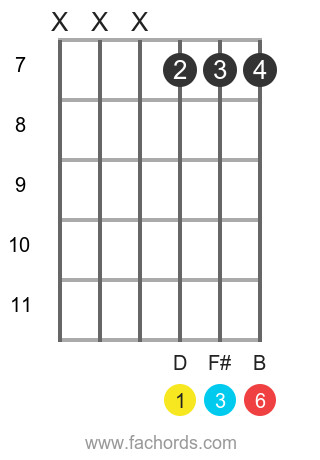 D6 chord position 5 open full sound diagram
D6 chord position 5 open full sound diagram
Position 6: Movable Shape Higher Up
A movable D6 shape played higher up the fretboard for a brighter tone.
 D6 chord position 1 open voicing diagram
D6 chord position 1 open voicing diagram
Position 7: Movable Shape with Root on A String
This movable D6 shape places the root note on the 5th string (A string).
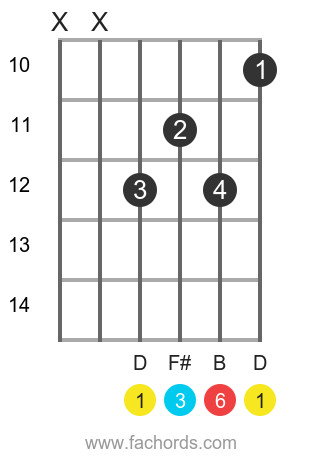 D6 chord position 7 movable A string root diagram
D6 chord position 7 movable A string root diagram
Position 8: Barre Chord Shape
A barre chord voicing of D6, providing a solid and powerful sound.
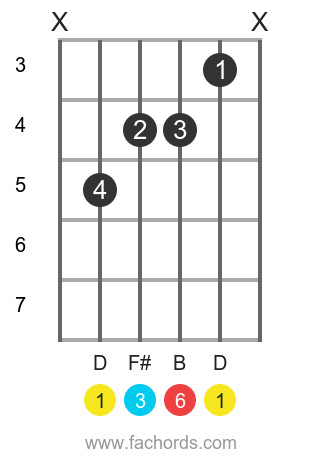 D6 chord position 8 barre chord shape diagram
D6 chord position 8 barre chord shape diagram
Position 9: Barre Chord Variation Higher Up
Another barre chord D6 shape, positioned higher on the neck.
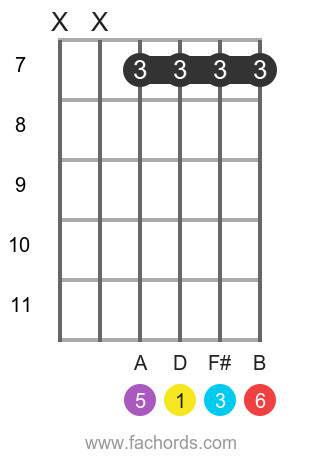 D6 chord position 9 barre chord variation diagram
D6 chord position 9 barre chord variation diagram
Position 10: Barre Chord Shape on Lower Strings
This barre chord D6 shape utilizes the lower strings for a deeper sound.
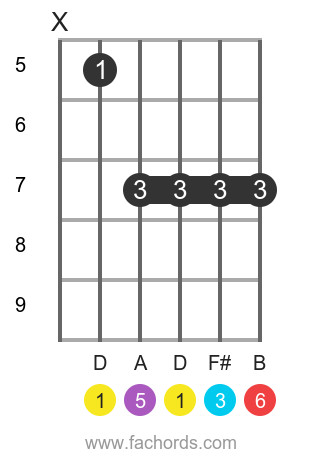 D6 chord position 10 barre chord low string diagram
D6 chord position 10 barre chord low string diagram
Explore our extensive all guitar chords online library for even more chord shapes. You can also download our Free Guitar Chords Chart Pdf for offline practice.
Incorporating the D6 Chord into Your Music
The D6 chord is a valuable addition to your chord vocabulary and can be used in various musical styles. Its rich and slightly jazzy flavor makes it suitable for:
- Jazz and Blues: D6 chords are frequently used in jazz and blues progressions to add harmonic complexity and a smoother feel.
- Pop and Rock: While less common than major or minor chords, D6 can add a unique touch to pop and rock songs, particularly in intros, outros, or bridges.
- Folk and Singer-Songwriter: The gentle and melodic quality of the D6 chord complements folk and singer-songwriter music beautifully, adding emotional depth to acoustic arrangements.
Experiment with substituting D6 for a standard D major chord in your songs and chord progressions. You’ll discover how this simple change can bring a fresh and sophisticated dimension to your music. To further expand your chord knowledge and playing skills, consider exploring our tutorial on intermediate guitar chords.
Conclusion: Expanding Your Harmonic Palette with D6
The D6 guitar chord is more than just another chord to learn; it’s a gateway to richer harmonies and more expressive guitar playing. By understanding its construction and mastering different positions, you can unlock new musical possibilities and add a touch of elegance to your guitar repertoire. Continue to explore different chord types and voicings to further enhance your musical journey and develop your unique guitar voice.
Explore other 6th chords with different root notes: C 6 | D 6 | E 6 | F 6 | G 6 | A 6 | B 6 | C#6 | D#6 | F#6 | G#6 | A#6 | Ab6 | Bb6 | Db6 | Eb6 | Gb6
